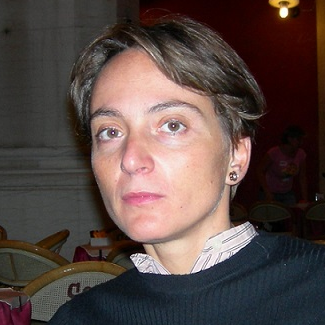Green and Unconventional Routes for the Synthesis of Crystalline Inorganic Materials —Selected Papers from AIM 2018
A special issue of Materials (ISSN 1996-1944).
Deadline for manuscript submissions: closed (31 July 2019) | Viewed by 4588
Special Issue Editors
Interests: wet chemistry & colloid chemistry
Special Issues, Collections and Topics in MDPI journals
Interests: colloidal nanoparticles and nanocrystals; functional nanomaterials; photocatalysis; nanomedicine
Special Issues, Collections and Topics in MDPI journals
Interests: in situ studies of crystallisation phenomena; colloidal syntheses; functional nanomaterials
Special Issue Information
Dear colleagues,
The huge variety of experimental methodologies for the preparation of inorganic crystalline (nano)materials demonstrates the charms of preparative wet and colloidal chemistry and shows the great power of imagination. Each synthetic approach could, in turn, be optimized to yield shape controlled and nanostructured materials.
This Special Issue aims to collect examples of green and/or unconventional methods for the preparation of advanced inorganic materials, with special attention to those approaches with low environmental impact and complying with the twelve principles of Green chemistry.
The focuses of this Special Issue include, without being limited to, the following themes: flow or high-throughput methods, biogenic, template, microwave-assisted and solvothermal approaches, syntheses based on deep eutectic/supercritical/ionic liquid solvents, computational-assisted development of syntheses, and design-of-experiment.
Prof. Silvia Gross
Dr. Lucia Curri
Dr. Paolo Dolcet
Guest Editors
Manuscript Submission Information
Manuscripts should be submitted online at www.mdpi.com by registering and logging in to this website. Once you are registered, click here to go to the submission form. Manuscripts can be submitted until the deadline. All submissions that pass pre-check are peer-reviewed. Accepted papers will be published continuously in the journal (as soon as accepted) and will be listed together on the special issue website. Research articles, review articles as well as short communications are invited. For planned papers, a title and short abstract (about 100 words) can be sent to the Editorial Office for announcement on this website.
Submitted manuscripts should not have been published previously, nor be under consideration for publication elsewhere (except conference proceedings papers). All manuscripts are thoroughly refereed through a single-blind peer-review process. A guide for authors and other relevant information for submission of manuscripts is available on the Instructions for Authors page. Materials is an international peer-reviewed open access semimonthly journal published by MDPI.
Please visit the Instructions for Authors page before submitting a manuscript. The Article Processing Charge (APC) for publication in this open access journal is 2600 CHF (Swiss Francs). Submitted papers should be well formatted and use good English. Authors may use MDPI's English editing service prior to publication or during author revisions.
Keywords
- Colloids
- Wet chemistry
- New unconventional syntheses Green chemistry








